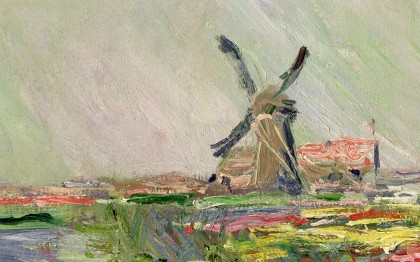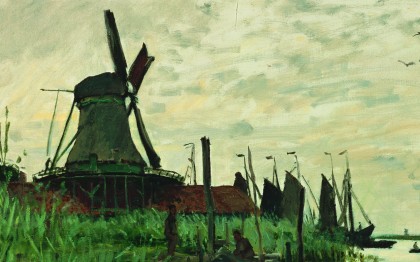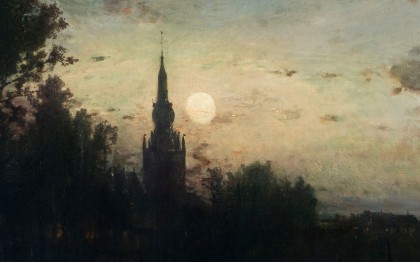Irrigated by the North Sea and countless canals, the Netherlands has been a land conducive to the transcription of seascapes since the 17th century. Dutch painters excel in the depiction of the interactions between water and light, and in the 19th century they inspired the renewal of landscape painting in France.
Johan Barthold Jongkind (1819-1891), born in the Netherlands but active in France from as early as 1846, played the part of ferryman for the Impressionist generation. His Vue d’Overschie is an example of this transition: the realism, broad sky, mirror of water and architectural volumes are a flagrant tribute to Dutch tradition; the foreground, immersing the spectator in the landscape, constitutes an innovation that the Impressionists would repeat.
Claude Monet (1840-1926) admired Jongkind whom he met in 1862. Perhaps it is on the Dutchman’s advice that he decided in May 1871 to go to the north of Holland, to Zaandam. Painting the windmills, the gabled houses and their reflections in the canals, Monet overtook his model and perfected some techniques such as the fragmentation of brushstroke which makes the water surface vibrant as in the emblematic Maisons au bord de la Zaan à Zaandam.
Monet made a second trip, to Amsterdam, in 1872 or 1874. He carefully composed his canvases and played with atmospheric effects in his stormy grey skies. In 1886, he returned a final time, briefly, and concentrated on the tulip fields which he depicted with an economy of means that he would incessantly accentuate afterwards.



